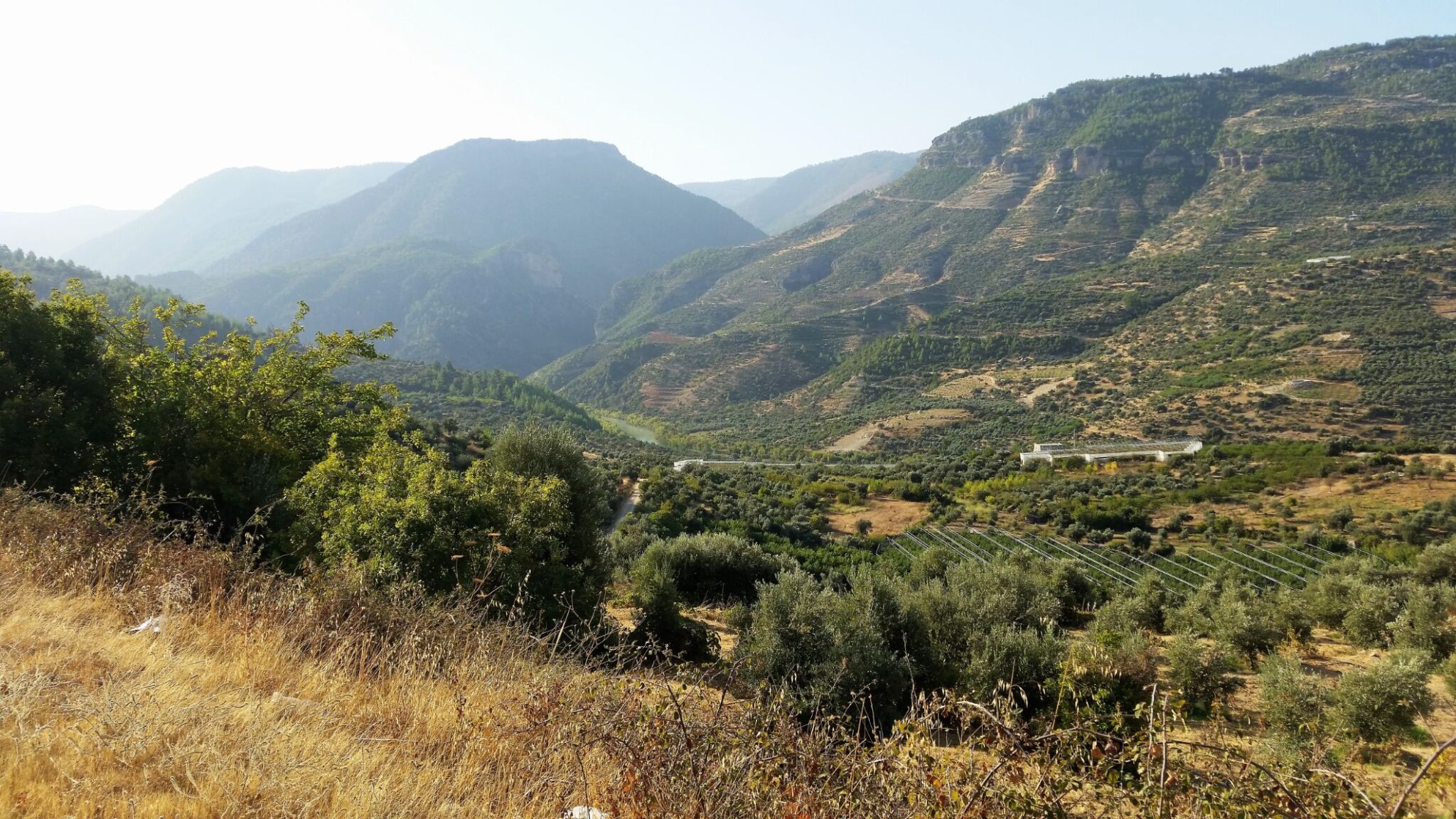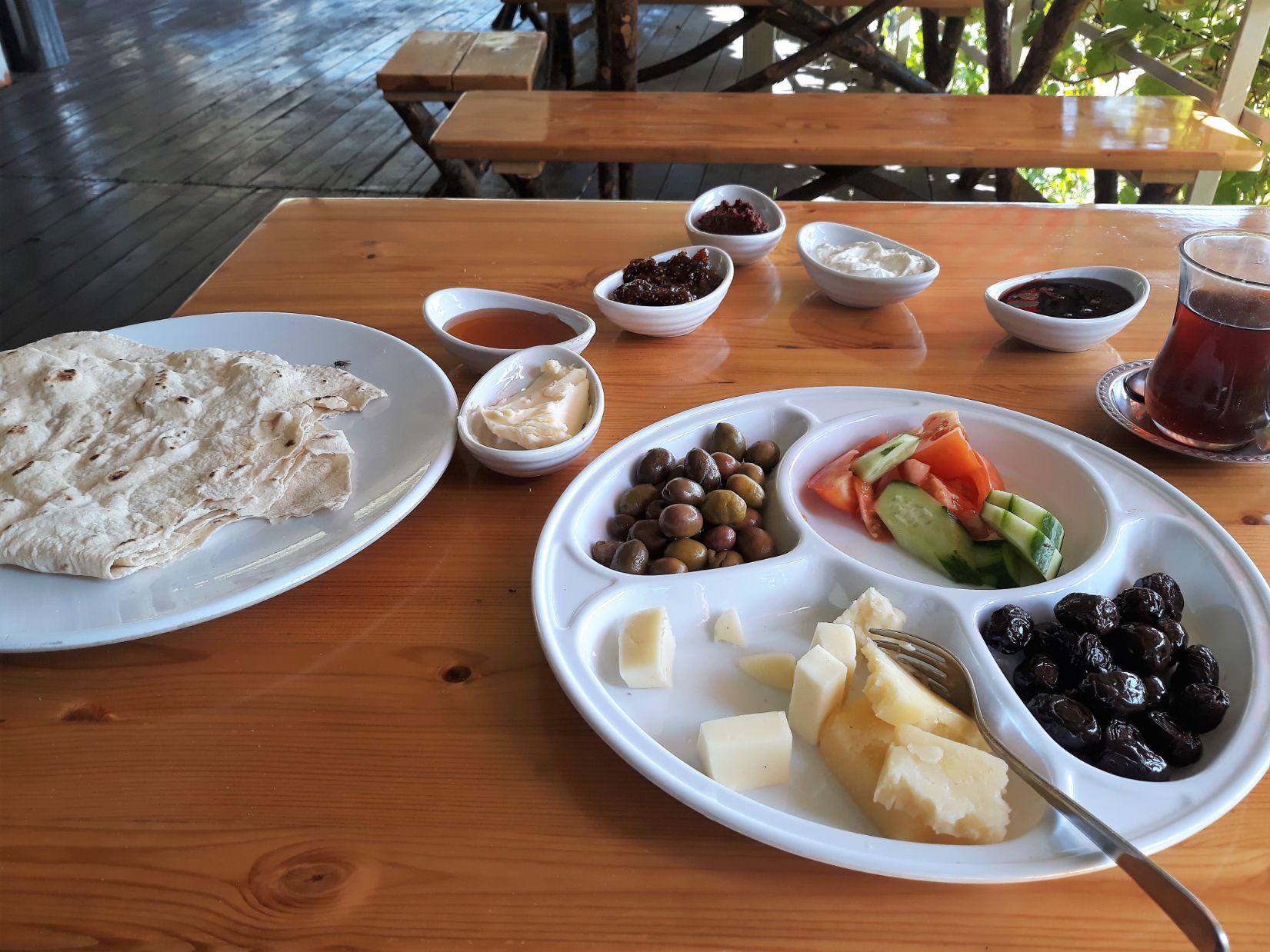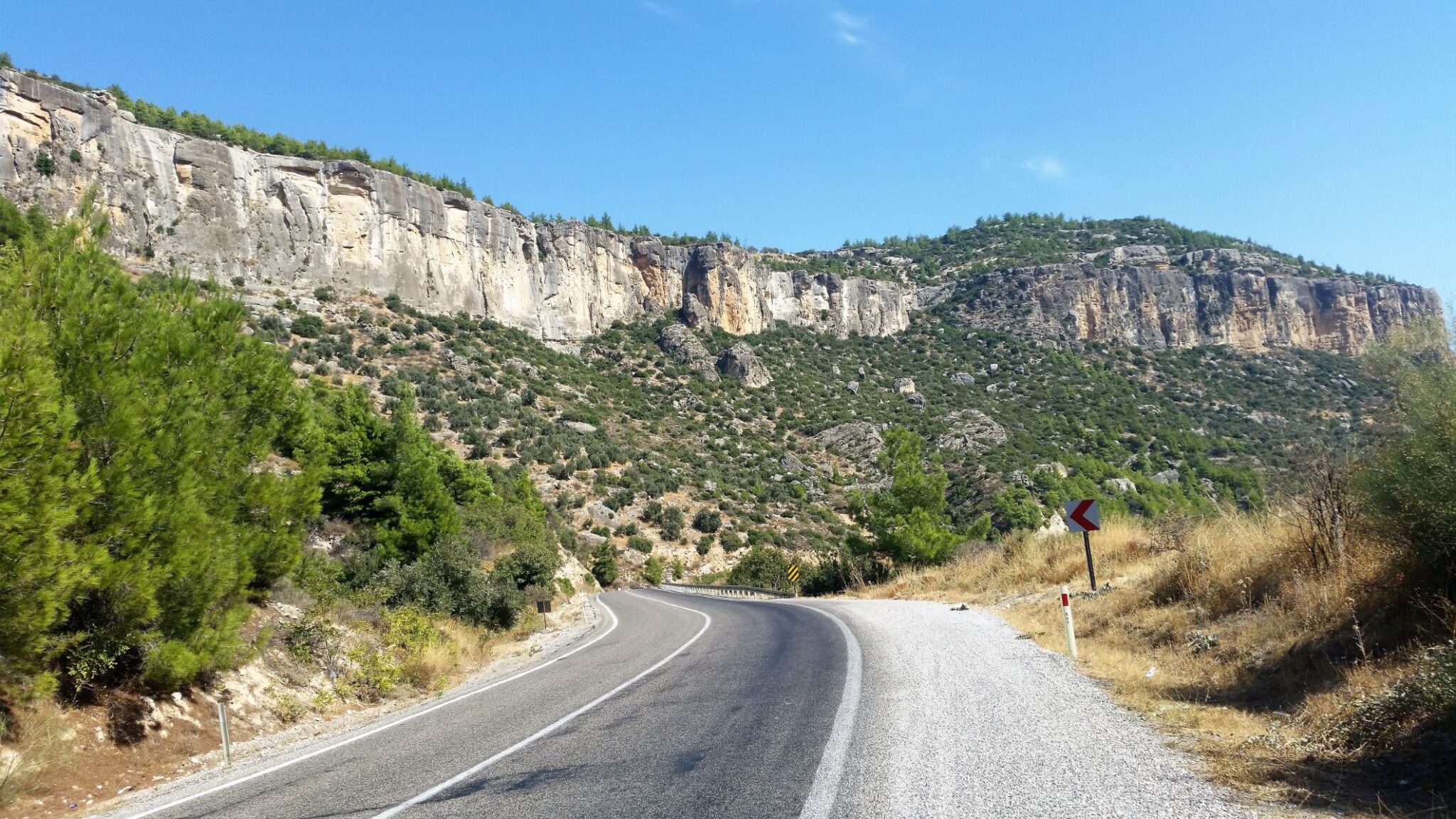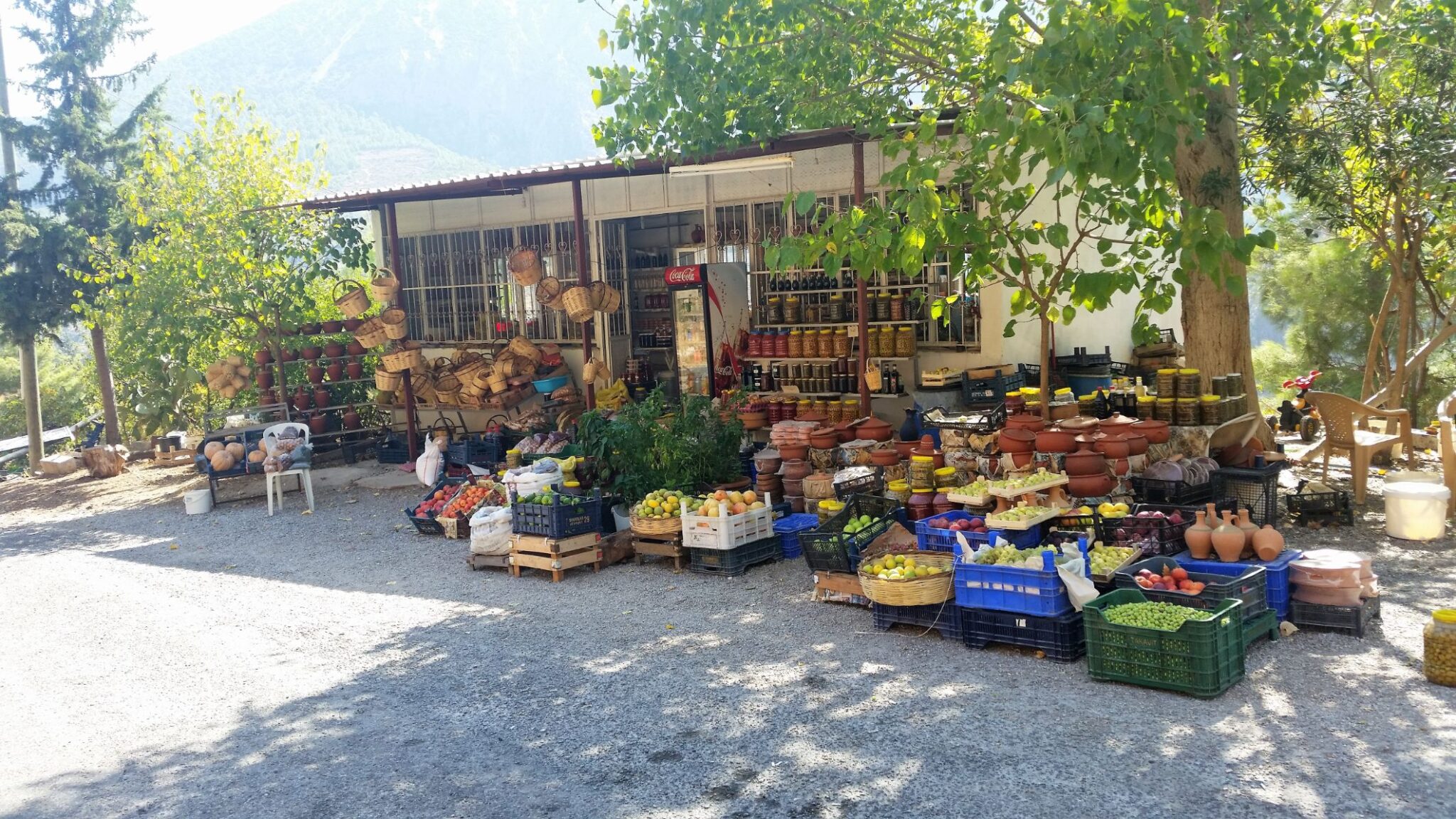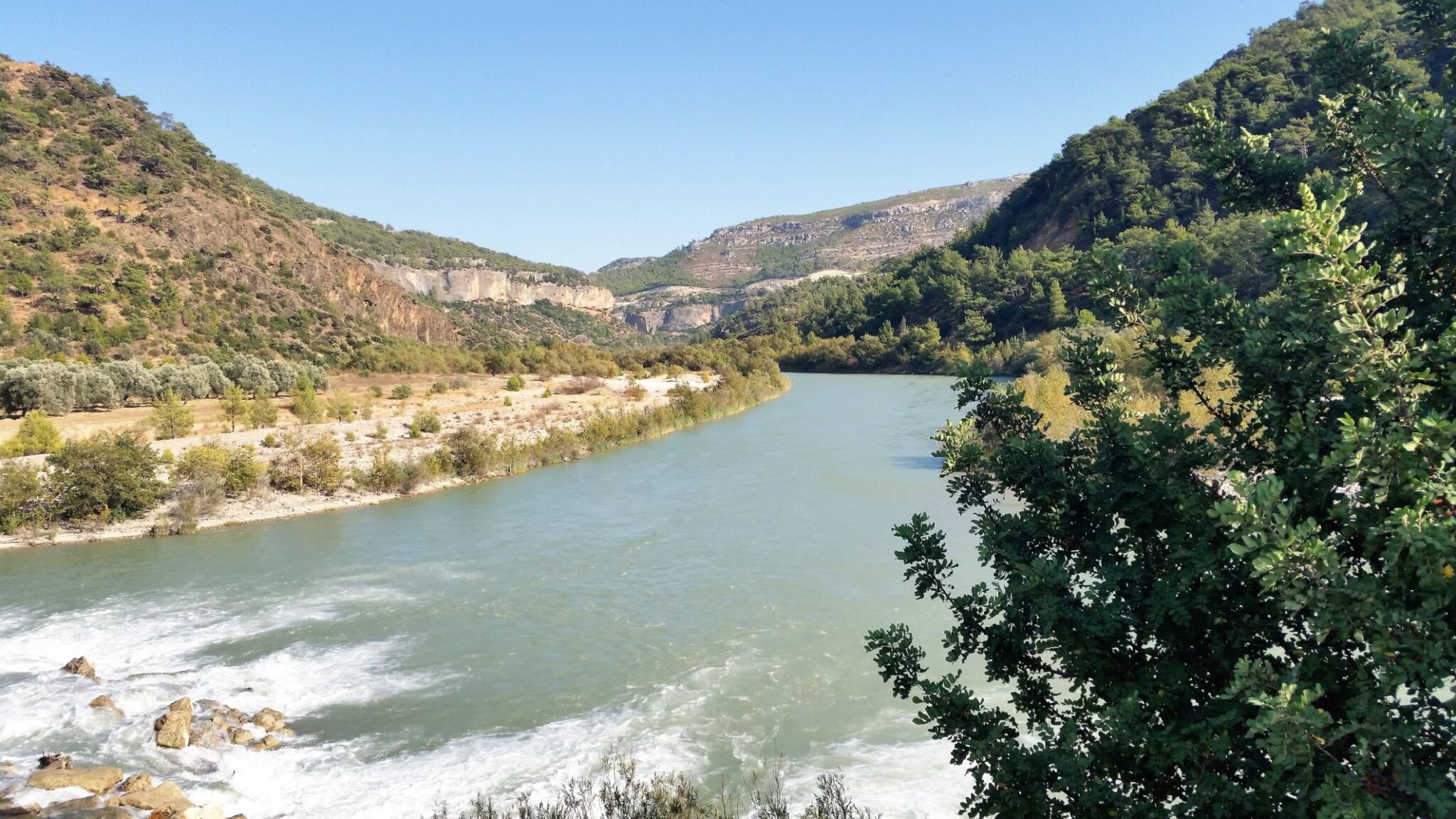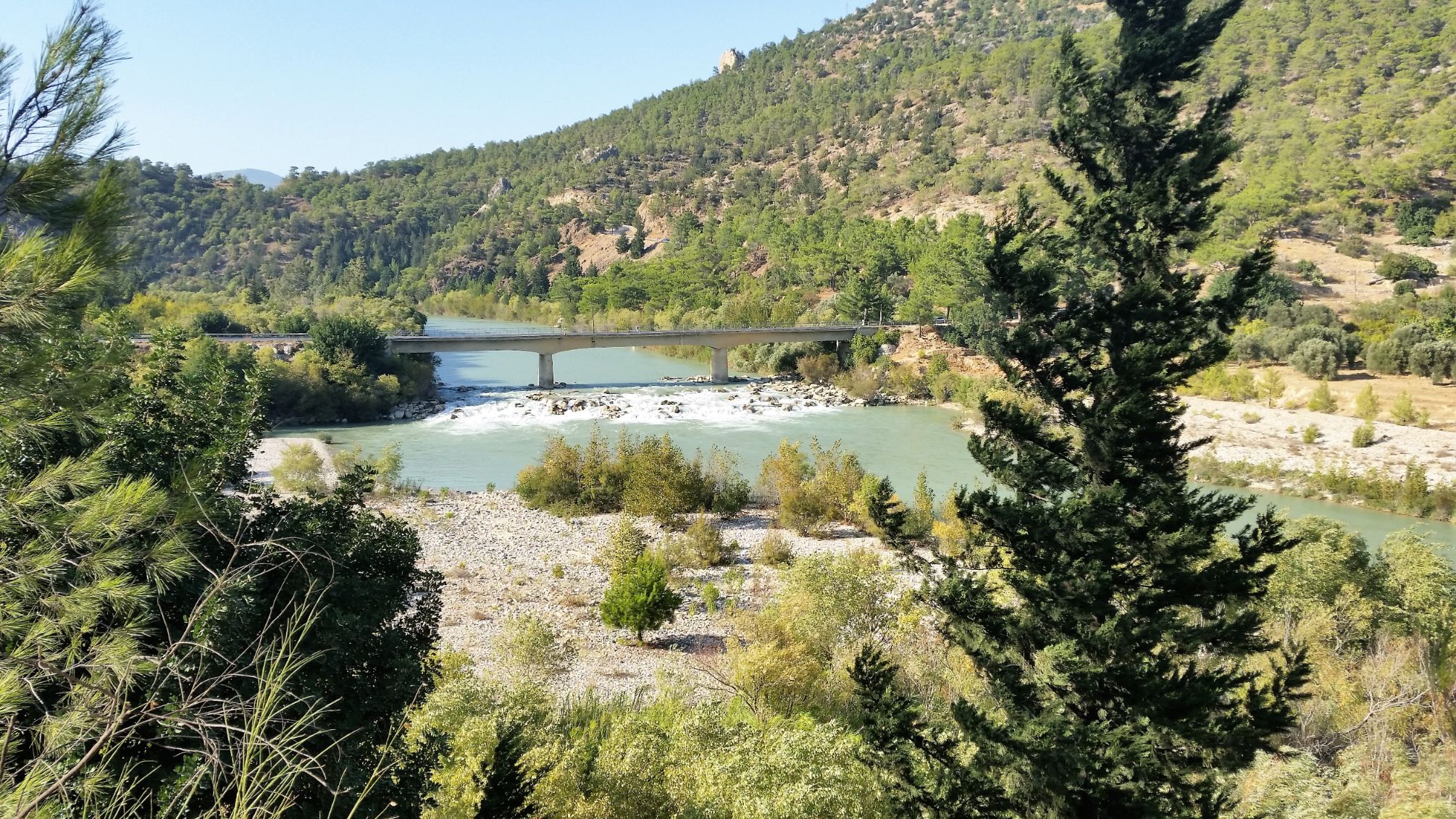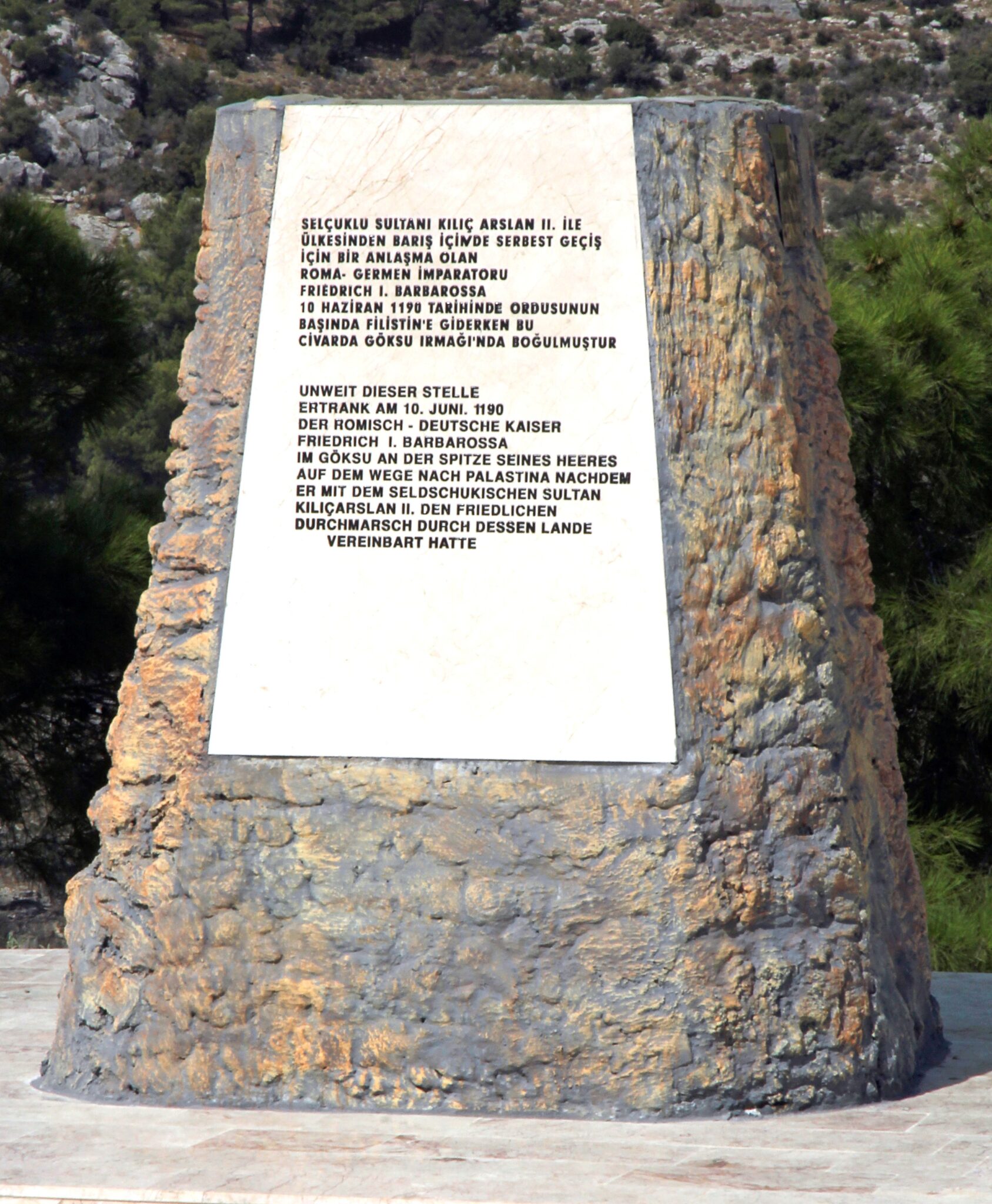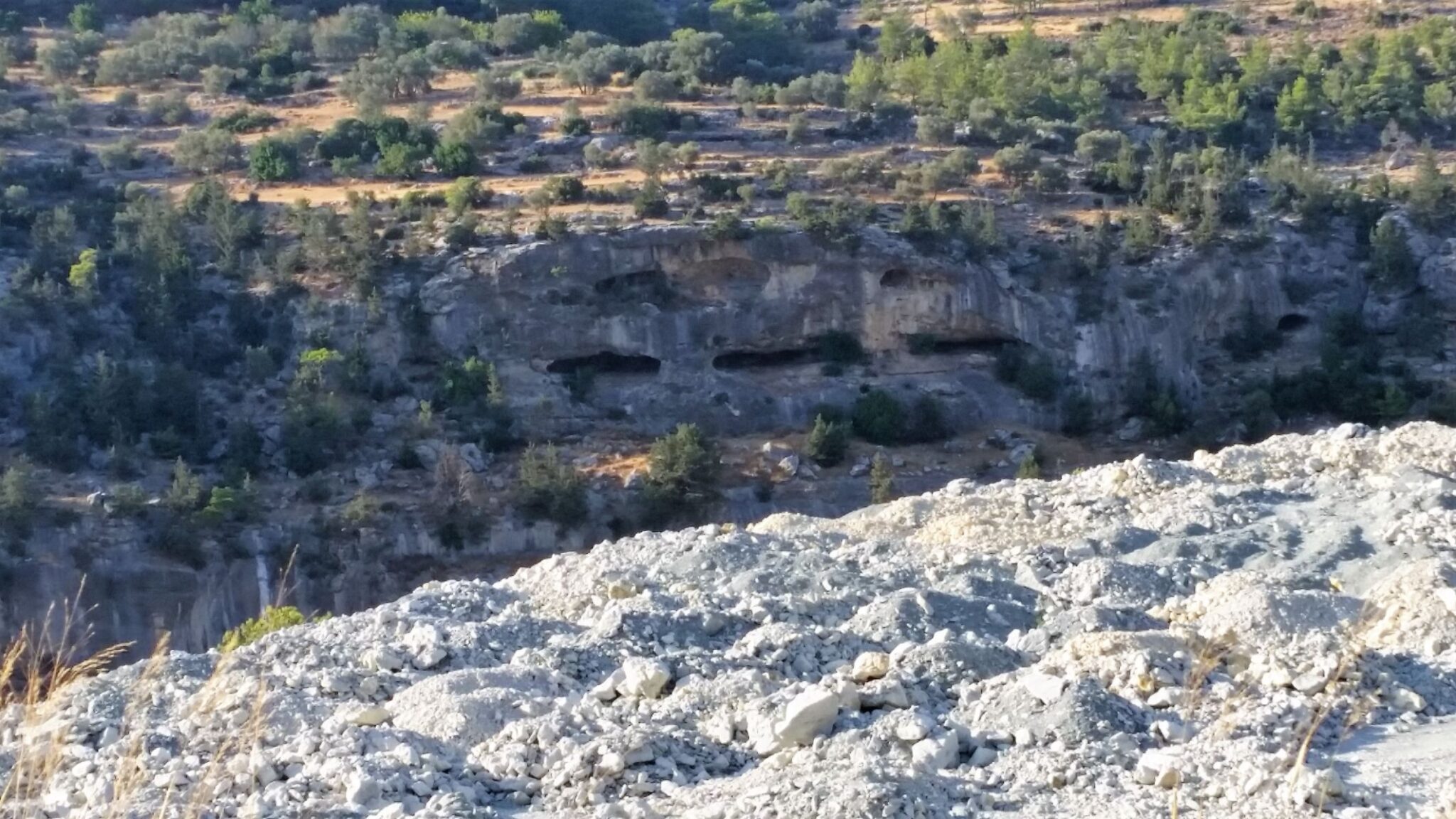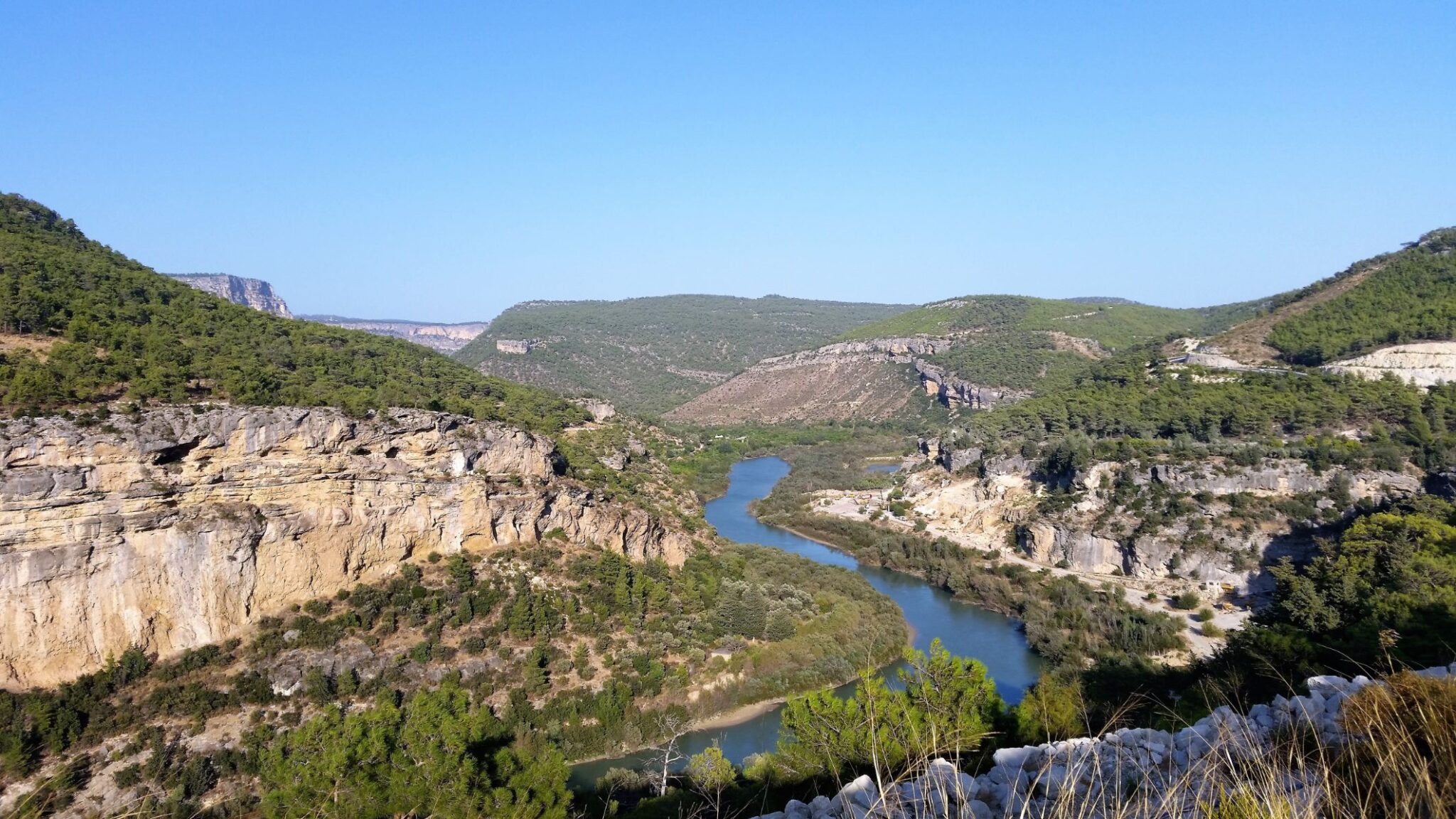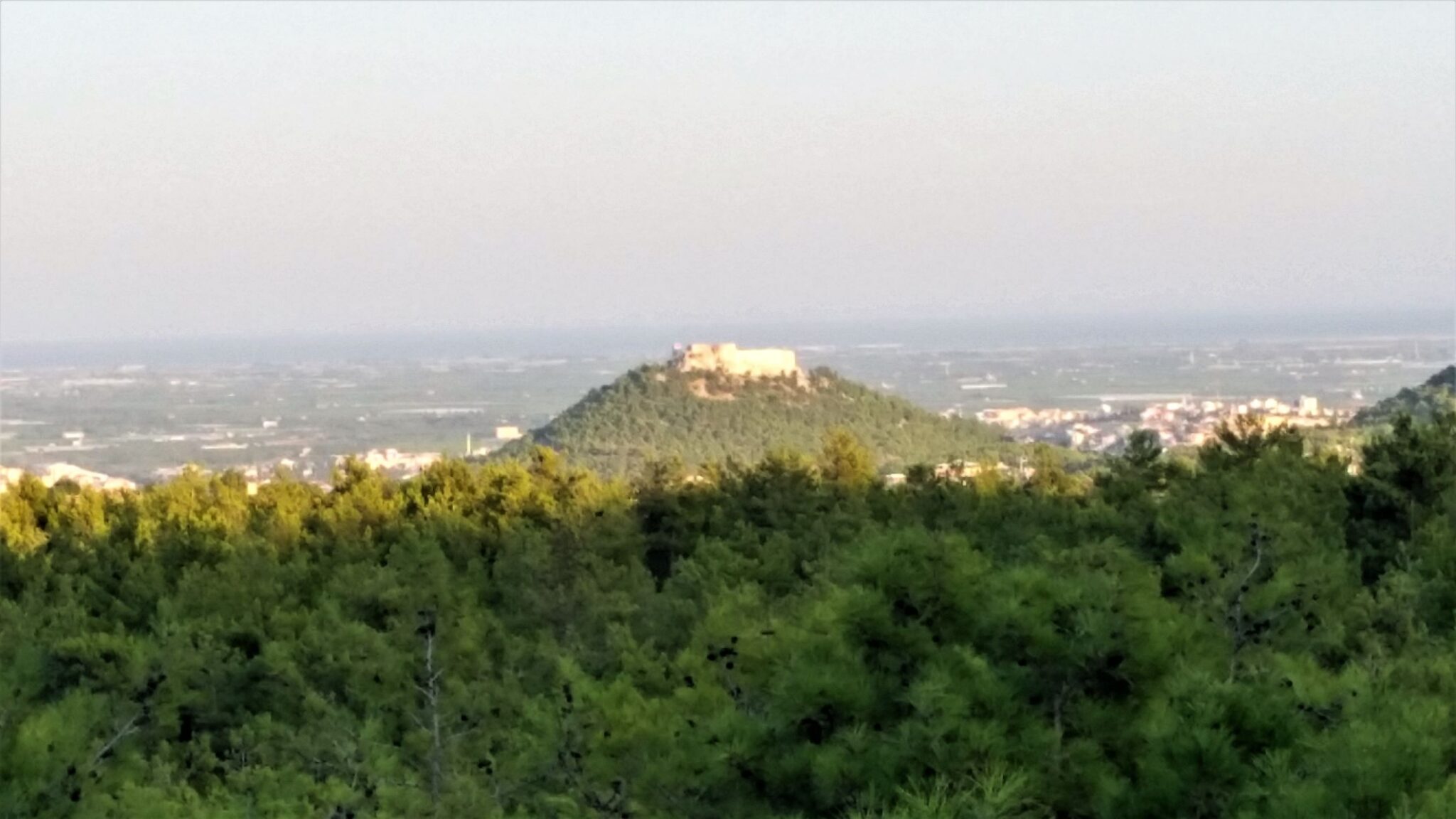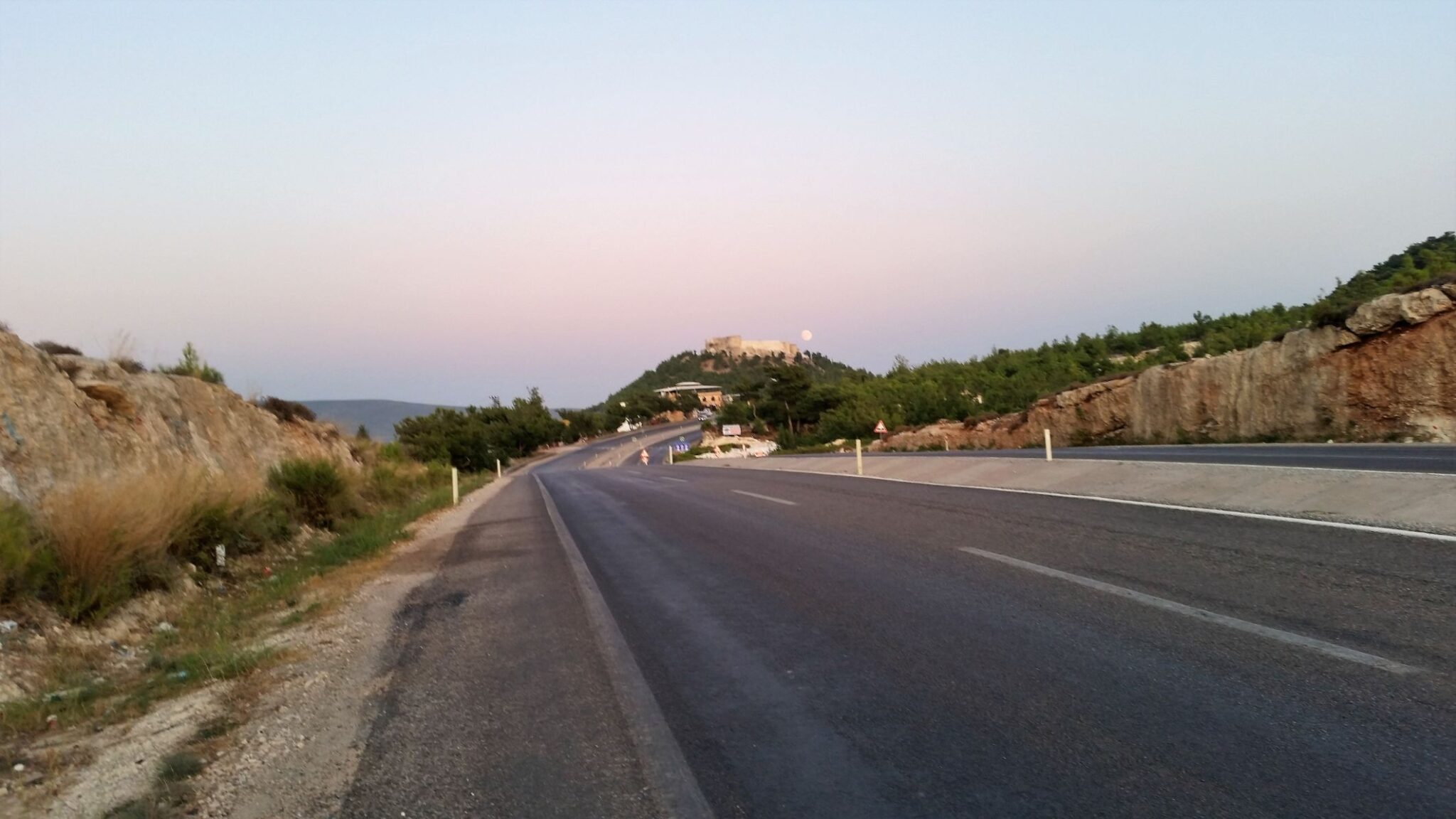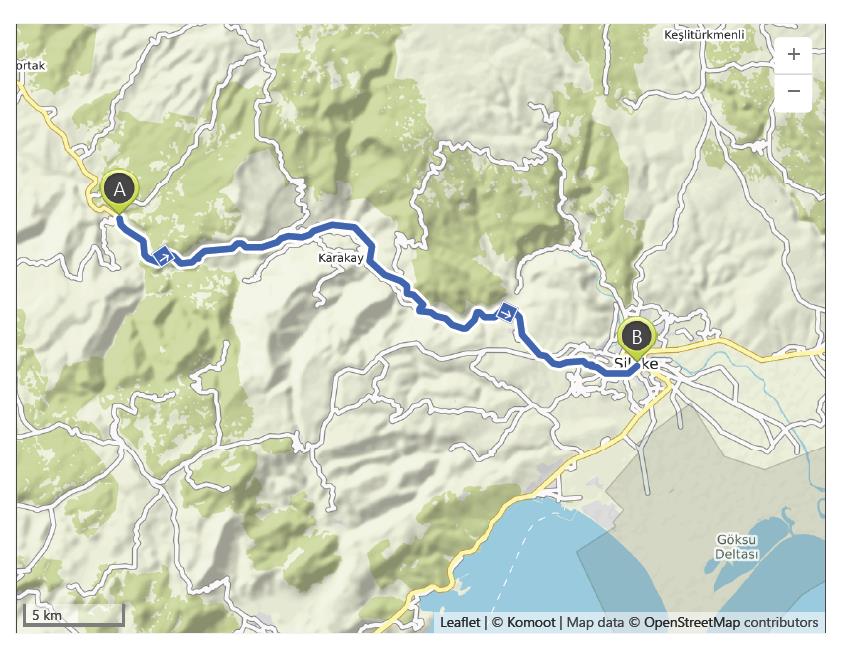Kargicak to Silifke – 12th October
Distance: 34.4 km – Elevation +490 m -670 m
Weather: Sunny. Temperature: High 36 degrees
When I woke this morning, the thought of returning to Kargicak and walking the 34 kilometres back to Silifke was not at first appealing. However, after a good breakfast and being fortified in mind, body, and spìrit I decided to take a taxi to Kargicak, I had missed the early bus and the next didn’t leave for another two hours.
Kargicak is clearly a meeting point for the surrounding villages and was a hive of activity when I arrived. There were market stalls busily selling colourful fruit and vegetables, travellers and truck drivers stopping for breakfast and minibuses coming and going at regular intervals. I stopped to buy fruit from one of the market stalls and approached a young woman dressed in an elegant hijab who was standing behind the stall and pointed to the apricots on display, she smiled and was about to serve me, when I guess her father who was standing nearby ushered her away and served me instead.
Temperatures are getting warmer by the day as I near the Mediterranean and had already reached 32 degrees when I started walking from Kargicak just before 9.00 am. I have not seen rain since I crossed the border from North Macedonia into Greece in mid-July, some 87 days ago.
For most of the day, I was to follow the Göksu river as it flowed through the deep canyons it had cut through the mountains. First at an elevated level and then dropping down to cross the river before climbing again. The views across the river valley to the Taurus mountains were incredibly beautiful, as peak after peak rose, layered one behind the other, above the fertile valley floor. The valley floor was much narrower now and the groves and orchards extended onto the mountain slopes. I was in no hurry knowing for the first time since leaving Kisecik that I had accommodation waiting for me at my day’s end, there is a certain inner sanctuary and peace of mind that comes with that knowledge.
I was reminded that this mountainous region, had for centuries been wild Asuria, where local tribes of bandits and brigands resided. Fiercely independent they defied the rule of empire after empire from the Persian through the Roman and Byzantine dynasties. They were marauders, expert horsemen and highly proficient with the bow and arrow, mounting raids on the farms and settlements in the valley below before retreating back into the mountains. It was easy to see, as I walked through this beautiful and rugged terrain how difficult it must have been to have brought a rule of law to these lands to contain and control the brigands.
it took me almost 2 hours to cover 6 kilometres to reach the village of Ortaören. I stopped at a roadside cafe simply called Danyal Ateş’s Place, and sat at a table that afforded wonderful views of the mountains and the valley below and ordered a glass of tea. A Turkish man sitting at an adjacent table introduced himself in perfect English. He was on his way to Konya and had stopped for breakfast and was clearly inquisitive about my presence here in the Taurus mountains and seemed impressed when he heard the details of my journey. I had intended to stop only for a refreshing tea but was tempted by the breakfasts being served to other customers and decided I would join them.
Later and near midday, I stopped briefly in the village of Keben at another roadside restaurant called, Ali-Göksu Manzaralı Kahvaltı Salonu, which translates as Ali – Breakfast Hall with Göksu View. It also afforded magnificent views of the river valley below and I rested for a while with a glass of refreshing tea. My slow pace continued as the road began to descend to the valley floor where I crossed the river via the Göksu bridge. A significant gusty wind was blowing through the valley and I had difficulty standing as I stood in the middle of the bridge to take a photograph of the river, its pale blue water glistening in the afternoon sunshine. As I left the bridge a dog sitting outside a tea house barked, becoming aggressive as I passed, at which point the tea house owner came to my rescue and invited me in for a free tea.
I was now on the other side of the valley and the road climbed for the next 8 kilometres, gaining 200 metres in elevation. Near the summit, I passed the memorial erected to commemorate the death of Emperor Friedrich Barbarossa. In 1190, Barbarossa had marched from Regensburg with a vast army, too large to travel by boat, intending to join the third crusade and meet with Richard the Lionheart at Acre where they would halt the progress of Saladin. Unfortunately, Barbarossa drowned whilst crossing the river below this monument.
This was a magnificent section of the valley, with spectacular views of the gorge through which the river runs. Sometimes it is difficult to find words to express the wonder of such moments. One of my favourite poets, John Keats, wrote “I want a brighter word than bright, a fairer word than fair.”, and standing here looking back along the canyon I understood exactly what he meant.
As I descended towards Silifke I passed the village of Tosmurlu and a local businessman who was driving into a roadside restaurant stopped his car and invited me to join him. I would have liked to accept his kind offer but I was tired after a long day and I still had several kilometres to walk to the Ayatekla Otel in Silifke where I was staying.
On the outskirts of the town, I caught sight of Silifke Castle sitting high on a hill in a dominant position overlooking the Silifke plains and the Göksu Valley. Originally constructed by the Byzantines, it was passed into the hands of the Knights Hospitaller in 1210 and much of the existing castle is crusader construction.
This was my penultimate walk in Turkey and it seemed, as I climbed that last hill, the toots, the waves, the flashing of lights, and the shouts that acknowledged and encouraged, were more than usual as if they knew I was close to finishing my wonderful journey through their country.
